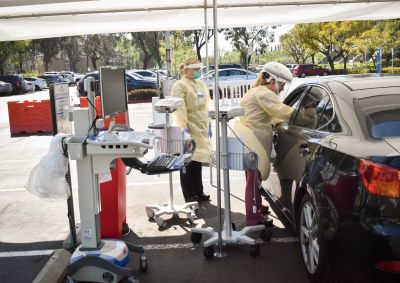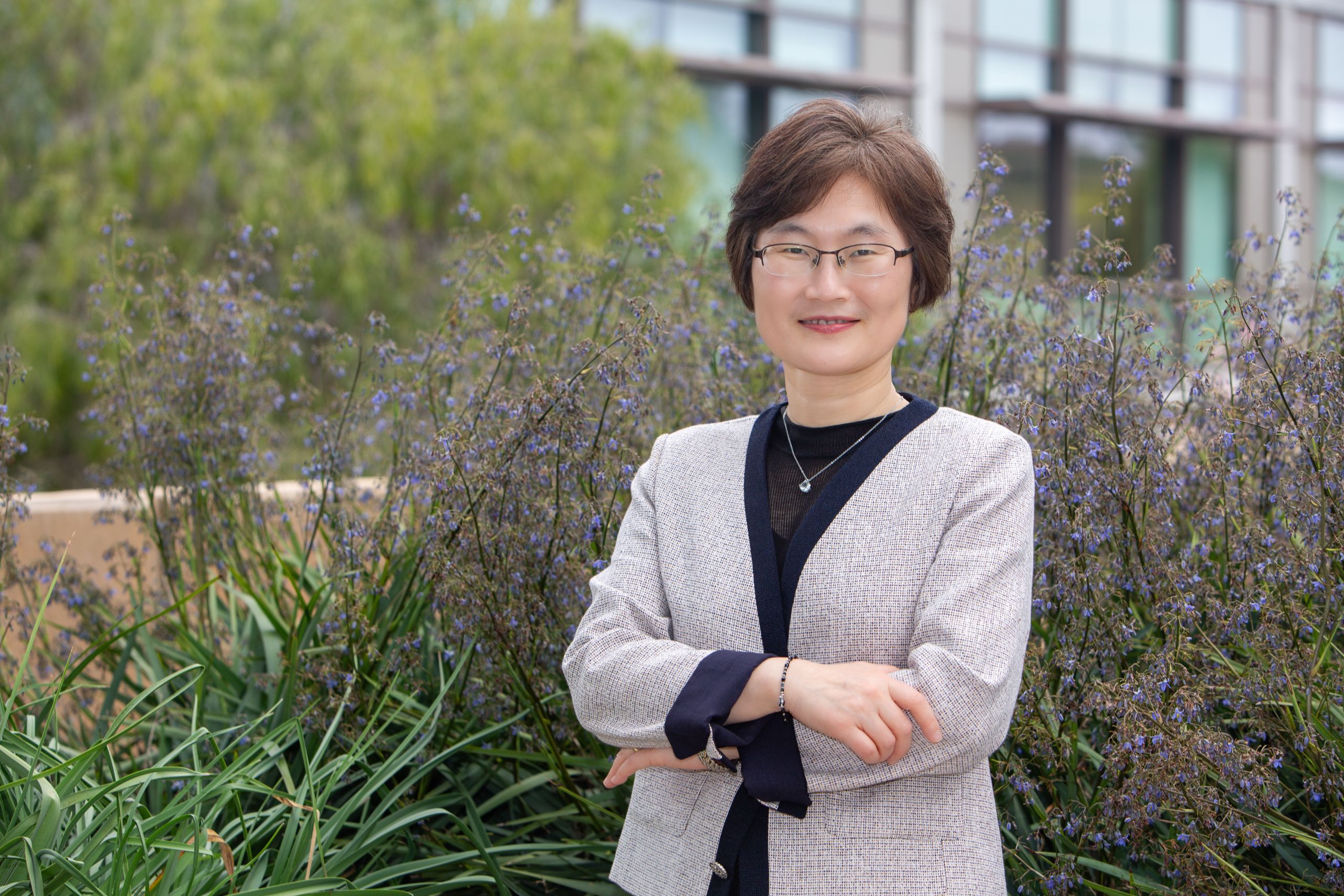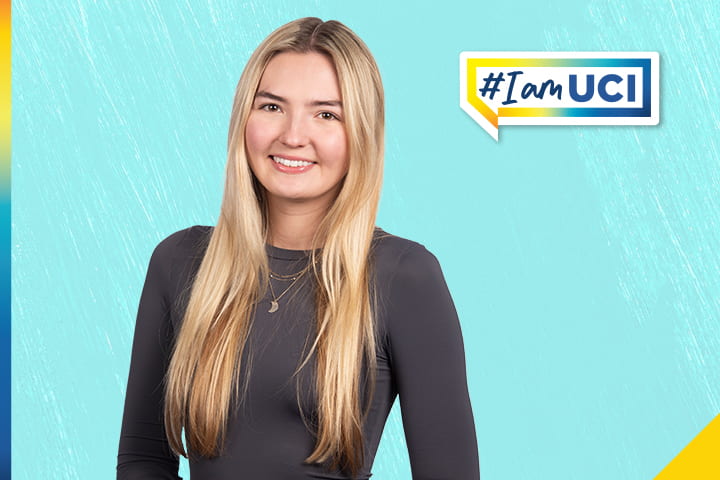
Susanne Phillips, DNP, and Tiffany Nielsen, DNP, test a patient for COVID-19 at UCI Health.
COVID testing can be an impersonal experience. It’s much different at UCI Health’s COVID-19 testing sites in Orange, Irvine and Santa Ana.
Susanne Phillips, a nurse practitioner and clinical professor at the UCI Sue & Bill Gross School of Nursing, has been leading the nursing care at the sites since the early days of the pandemic in March.
At the sites, people who are either symptomatic or have an order from a UCI healthcare provider are tested. Each week, hundreds of patients receive tests prior to all invasive and some non-invasive procedures, whether it’s surgery, pulmonary function testing, sleep studies, etc.
On top of that, they test UCI and CHOC employees who are ill. They also have contracts with Orange County Emergency Services (fire, sheriff, and police departments), and many employers across the county.
More than just a COVID-19 test
Phillips and other nurse practitioners, registered nurses, and licensed vocational nurses do much more than offer a test.
Early on, she says, they spent a lot of time comforting frightened people.
“They’d roll down the window and would already be crying. People were really scared.”
A number of times, people would ask her if a positive result meant they would die.
Experiences like these are why Phillips has nurses at every test site.
After all, she says, they can train anyone to swab a nasal cavity.
“It’s the patient connection and the explanation of what this means, what it doesn’t mean, what we know and what we don’t,” she says.
“We have the experience to sense when a patient needs a little more conversation about it.”
Although she spends about 5-10 minutes with each patient, she is able to take the time.
“It doesn’t take much to alleviate a patients’ fears.”
Correcting misinformation
Or in many cases, educate.
Phillips frequently finds herself correcting misinformation that has made its way to those she tests.
“A lot of this information shared by patients is inaccurate and is clearly informed (or misinformed) by media, favoring one side or another” she says, leading to confusion.
Phillips urges people to tune out the noise from the media and consult with healthcare providers, or read information from experts at the Centers for Disease Control instead.
“It would be nice if we could focus on caring for patients while continuing to improve our COVID-19 delivery system as new research, testing recommendations, therapies and vaccines emerge.”
COVID-19 testing methods used
All patients at UCI’s COVID-19 testing sites receive a nasopharyngeal swab. UCI has determined this is the most accurate test for the purposes of testing pre-procedural patients and patients who are ill. Alternate collection methods such as nasal swab and saliva may be utilized outside of the testing sites.
“We need the most sensitive and specific test to ensure, to the best of our ability, patients are not sick when they come in for their procedures, or accuracy of the result when they come for testing when they are ill. We want to make sure, as much as the technology provides, that patients are truly negative or truly positive for COVID-19.”
Phillips and the other nurse practitioners also call patients who have positive COVID-19 results to personally inform them. They also answer their sometimes numerous questions about what to do next, and provide education on quarantine, return to work guidelines, and when to seek further care. And they rarely take a break.
“I spent the first half of Thanksgiving day calling patients who were positive for COVID-19.”
Ready for the surge
As alarming as the current surge has been, Phillips and other UCI Health leadership were prepared for it.
In the beginning of the pandemic, the number of people wearing masks and social distancing were far fewer. People are doing that more regularly now, yet the current surge is worse than the one this summer, she says.
“The predictive models we’ve been watching since March showed the potential for this surge during the late fall and winter. So, we planned for this at the testing sites.”




Follow Us!